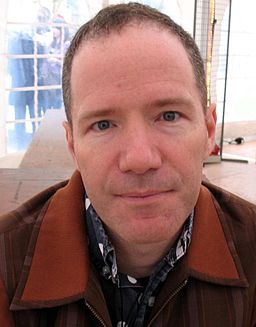Narcopolis
Narcopolis
Jeet Thayil
Penguin Press, April 2012
304 pages
$25.95
It’s dangerous to look for the reincarnation of a classic novel in contemporary literature. Like a monk seeking the next in the line of a particular lama, I placed the various relics of Malcolm Lowry’s Under the Volcano before first time novelist Jeet Thayil’s Narcopolis, hoping it would come down with the same beautiful, tragic fever. While I did find a novel driven by the same delusions of addiction, Thayil’s work is more pulpy than poetic, more Murakami in its everyday myth-making. And Bombay turns out to be a much more overwhelming setting than Lowry’s Quauhnahuac, Mexico, for better and for worse.
While bracketed by an apparently autobiographical first person narrator, most of the novel follows a small universe of characters whose center of gravity is an opium den run by Rashid, a harried businessman gradually falling prey to his own wares, including heroin. He starts his day by walking a few flights downstairs from his wives and children to his opium pipe, and although he survives mob violence and street wars, he is eventually broken by the futility of finding meaning in addicts and addictions.
His two most compelling customers are Dimple, a forcibly castrated yet highly literate prostitute who eventually becomes Rashid’s employee and live-in mistress, and Rumi, the prodigal son of a successful family who works very hard to never be sober enough to accept any responsibilities. Rumi is the Indian equivalent of Geoffrey Firmin, a man who might find meaning in many places, but can find no value in anything but his drug.
The star of this fast-paced dissolution is Dimple, whose story starts when she is taken in by Mr. Lee, a former Chinese National Army officer and something of an opium dealer’s opium dealer. Mr. Lee recognizes an heir in Dimple, who needs opium as badly as he does. Dimple never shakes the ghost of Mr. Lee, as she tries but fails to become more than the lost addict he was.
The novel’s least successful passages seem like late night revelations from an addict’s notebook, which Thayil should have discarded as nonsense the next morning. In the most egregious example, Dimple dreams of priests gang-raping a filthy young girl. In the middle of the assault, one of the priests turns towards Dimple and mouths, “This is India.” It is a strong contender for the worst scene ever found into a good novel.
Still, we get a rich picture of Bombay when the addicts step outside and see the religious violence and everyday chaos they have ignored. In one fantastic action sequence, Rashid’s rival convinces a government ministry to close the den, only to be rather violently convinced by Rashid’s gangland friend to back off. Of course, that same friend later becomes a victim in a similar bloody spasm.
The novel ends in surrender, with individual fates lost in the city’s fire. Like Lowry’s classic, Narcopolis moves us through human disaster with poetry and urgency. And although he’s not always able to reign in his literary excesses, Thayil gives us the scent of an enchanting city and a strong idea of his intoxicating talent.


